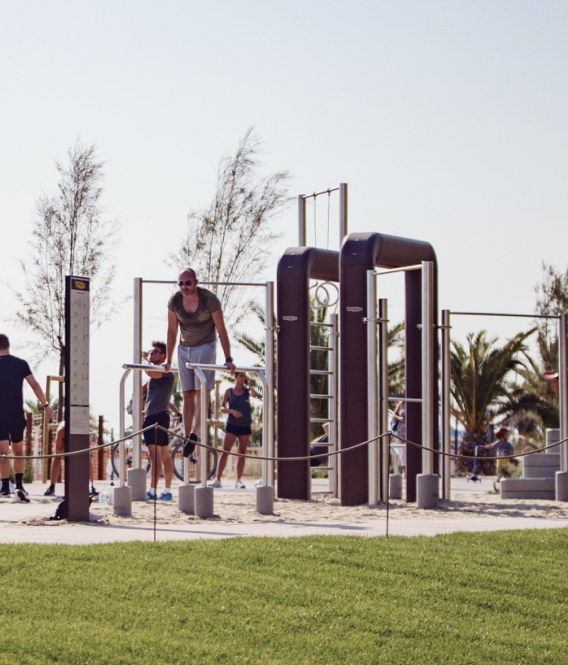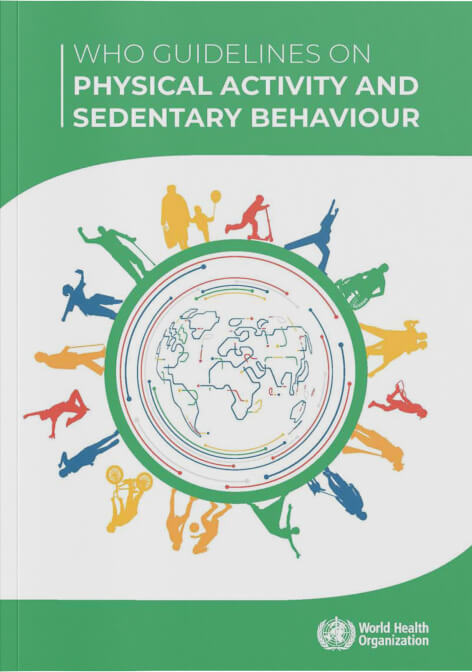
01
Find out your activity level
Choose the statement that best identifies your weekly movement habits. Based on your answer, you will obtain some useful tips to improve your lifestyle.

HOW ACTIVE ARE YOU?

HOW ACTIVE ARE YOU?
Start again
02
How active are you?
Feeling good is an opportunity for all, for you as well.

A Wellness lifestyle is also recommended by the World Health Organization in its 2020 “Guidelines on Physical Activity and Sedentary Behaviour”.
The Guidelines emphasize the importance for people of all ages to undertake regular aerobic physical activity and to do muscle-strengthening activities for substantial health benefits.
The Guidelines emphasize the importance for people of all ages to undertake regular aerobic physical activity and to do muscle-strengthening activities for substantial health benefits.

It is recommended that:
Children and adolescents


Children and adolescents should do at least an average of 60 minutes per day of moderate-to vigorous intensity, mostly aerobic, physical activity, across the week.
Vigorous-intensity aerobic activities, as well as those that strengthen muscle and bone, should be incorporated at least 3 days a week.
Strong recommendation, moderate certainty evidence
Vigorous-intensity aerobic activities, as well as those that strengthen muscle and bone, should be incorporated at least 3 days a week.
Adults


All adults should undertake regular physical activity.
Adults should do at least 150–300 minutes of moderate-intensity aerobic physical activity; or at least 75–150 minutes of vigorous- intensity aerobic physical activity; or an equivalent combination of moderate and vigorous-intensity activity throughout the week, for substantial health benefits.
Strong recommendation, moderate certainty evidence
Adults should do at least 150–300 minutes of moderate-intensity aerobic physical activity; or at least 75–150 minutes of vigorous- intensity aerobic physical activity; or an equivalent combination of moderate and vigorous-intensity activity throughout the week, for substantial health benefits.
Physical activity and exercise are commonly used as synonyms. However, there is a significant difference between them.
Physical activity is any form of movement that works your muscles and uses more energy than you use when resting.
Physical exercise refers to physical activity in a structured form (quantified by volume, duration, frequency, intensity), planned and performed regularly in order to improve or maintain your fitness level and your health.
You are getting adequate exercise, if you regularly do during the week:
Being physically active improves your body functionality and reduces the risks associated with overweight and aging. The benefits that can be obtained with regular exercise are many: it helps the cardiovascular system work better, it reduces the risk of osteoporosis, increases muscle strength and elasticity, tones the body and makes it more harmonious. In addition, it regulates sleep and appetite, improves mood, reduces stress and anxiety and increases self-confidence.
We have a wide range of options to keep fit. With a little effort, we can adopt the correct movement habits.
We can start moving at any age and achieve excellent results by following the activity programme that best suits our needs and personal goals.
It is never too late to become fitter, healthier and happier.
Physical activity is any form of movement that works your muscles and uses more energy than you use when resting.
Physical exercise refers to physical activity in a structured form (quantified by volume, duration, frequency, intensity), planned and performed regularly in order to improve or maintain your fitness level and your health.
You are getting adequate exercise, if you regularly do during the week:
- Cardiovascular training
- Strength training
- Flexibility training
Being physically active improves your body functionality and reduces the risks associated with overweight and aging. The benefits that can be obtained with regular exercise are many: it helps the cardiovascular system work better, it reduces the risk of osteoporosis, increases muscle strength and elasticity, tones the body and makes it more harmonious. In addition, it regulates sleep and appetite, improves mood, reduces stress and anxiety and increases self-confidence.
We have a wide range of options to keep fit. With a little effort, we can adopt the correct movement habits.
We can start moving at any age and achieve excellent results by following the activity programme that best suits our needs and personal goals.
It is never too late to become fitter, healthier and happier.


03
The Decalogue of Wellness
Wellness lifestyle cannot be achieved without healthy habits, a daily commitment and positive attitude and motivation.
The Decalogue of Wellness is an easy guide designed to help you develop the good habits for a healthy life.
Start building these 10 simple yet essential habits to improve your wellbeing and live a happier and more productive life.
The Decalogue of Wellness is based on the principles of the Wellness lifestyle and promoted by the Wellness Foundation as an opportunity for everyone to discover the lasting benefits of ‘mens sana in corpore sano’.
Start building these 10 simple yet essential habits to improve your wellbeing and live a happier and more productive life.
The Decalogue of Wellness is based on the principles of the Wellness lifestyle and promoted by the Wellness Foundation as an opportunity for everyone to discover the lasting benefits of ‘mens sana in corpore sano’.





